The month of March has been frenetic and feverish – and that is an understatement. Other than the consulting assignment, which I have been working on, it has also been a sort of geeky month. My website had some glitches on the server, then my iPhone acted up and finally, my laptop decided it was time to breathe its last. Add to that a switch to Apple after using Windows for about 20 years, and you can imagine how it has been. Fascinating!
And this meant that even writing a post got put on the backburner. Anyway, here I am again…with thoughts of the Maha Kumbh that I went to in February.
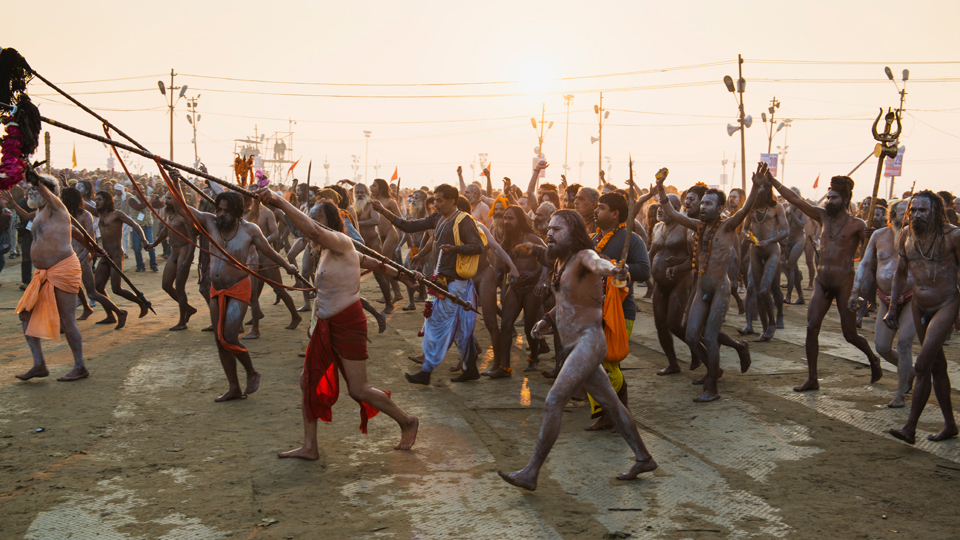
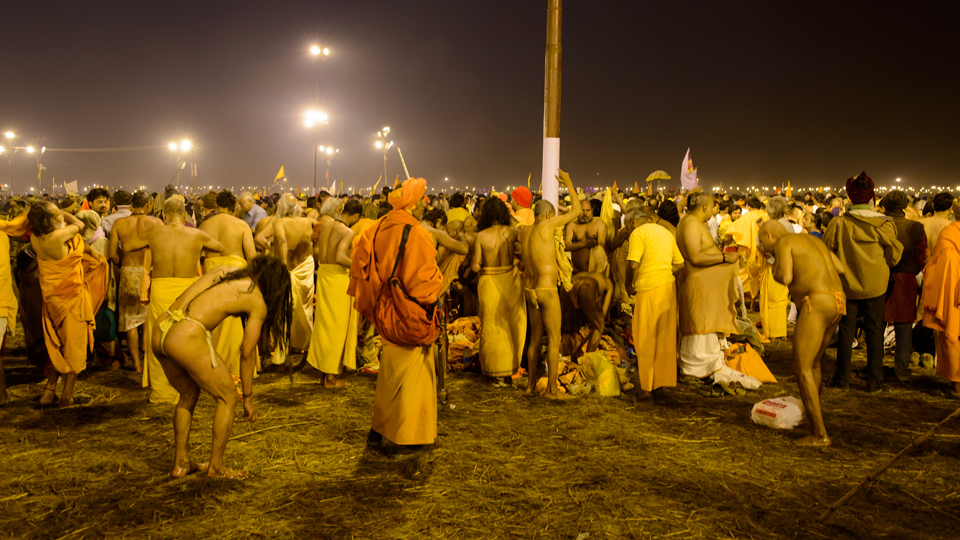
Held this year at Allahabad, at the confluence of the three most holy rivers in India: the Ganga, the Yamuna, and the mythological Saraswati, the Kumbh lures the faithful for a dip in the holy waters that relieves them of lifetimes of karma. Hindu religious scriptures say that bathing on the astrologically favorable days snuffs out innumerable sins, relieving the pilgrim of his or her entanglement in the complex cycle of birth, disease, old age, and death – the cycle of samsara. Kumbh is actually a Sanskrit word meaning “pot”, “pitcher” or “jar” and mela means “festival.” According to Indian mythology, the Kumbh Mela derives its name from the pot of the immortalizing nectar from the waters of the holy river Ganga.
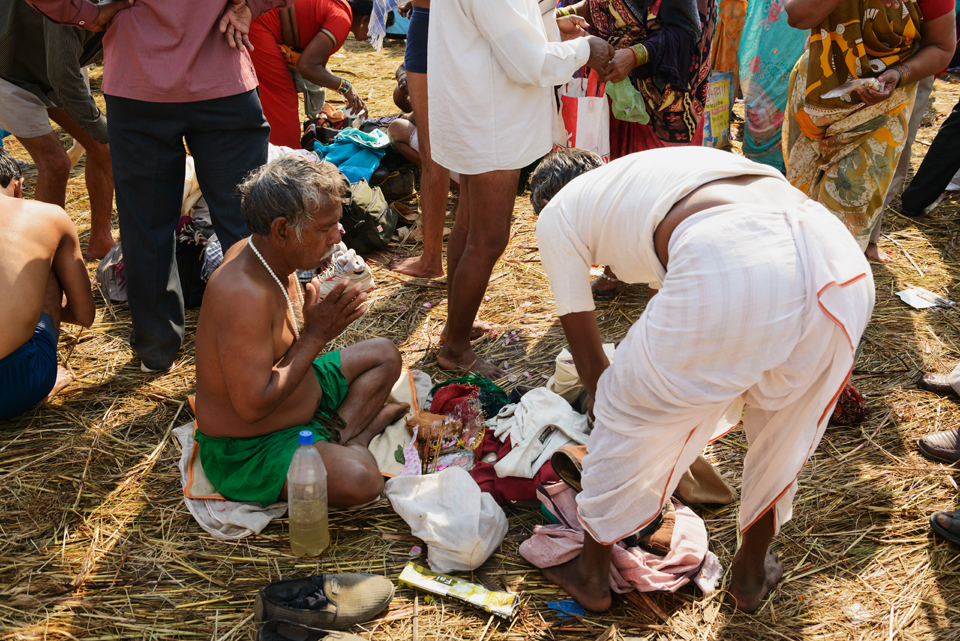
It has had an appeal or an allure for saints and scholars for many millennia. In about 302 B.C., the great Greek historian Megasthenes documented his seventy-five-day stay at Prayaga (Allahabad), during a mela which had an attendance of two and a half million. Some hundreds of years later, in the 7th century A.D., the devout emperor Harsha invited the distinguished Chinese mendicant Hsian Tsang to attend the festivities of the mela. Later when writing his journals, Tsang noted Harsha’s consummate spiritual leadership with lavish praise and wrote: “The festival concluded with Harsha distributing all of his accumulated wealth to the needy, down to his robes, and returning to his palace in clothes borrowed from his sister.”
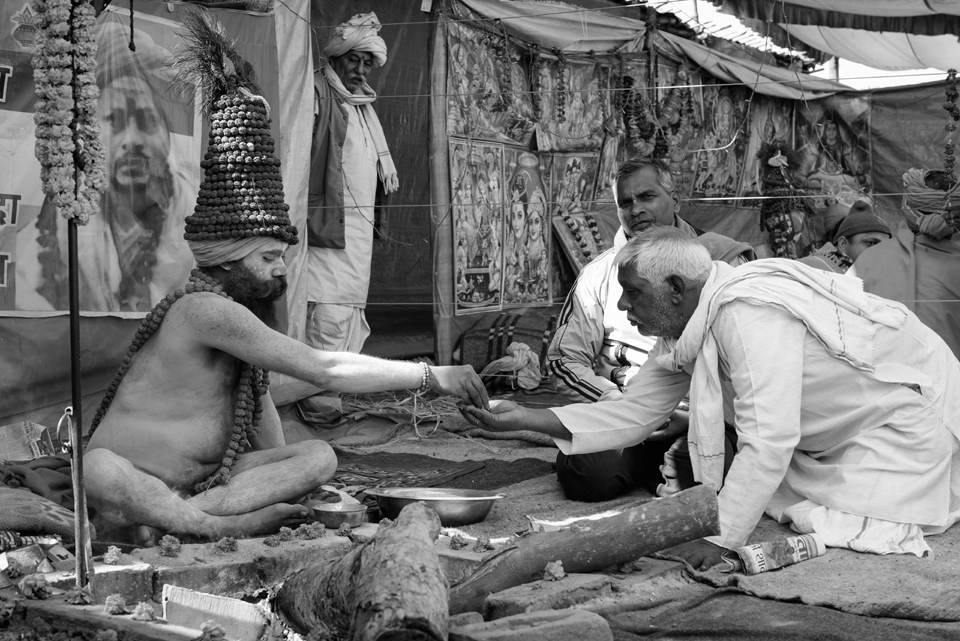
The Kumbh is a melting pot for perhaps more than eight thousand religious groups and sects that debate and discuss philosophy. For the mela, it is said that this is a symbol of Hindu unity, an instrument for passing on spiritual teachings and values of India’s ancient Vedic culture to the masses of devotees.
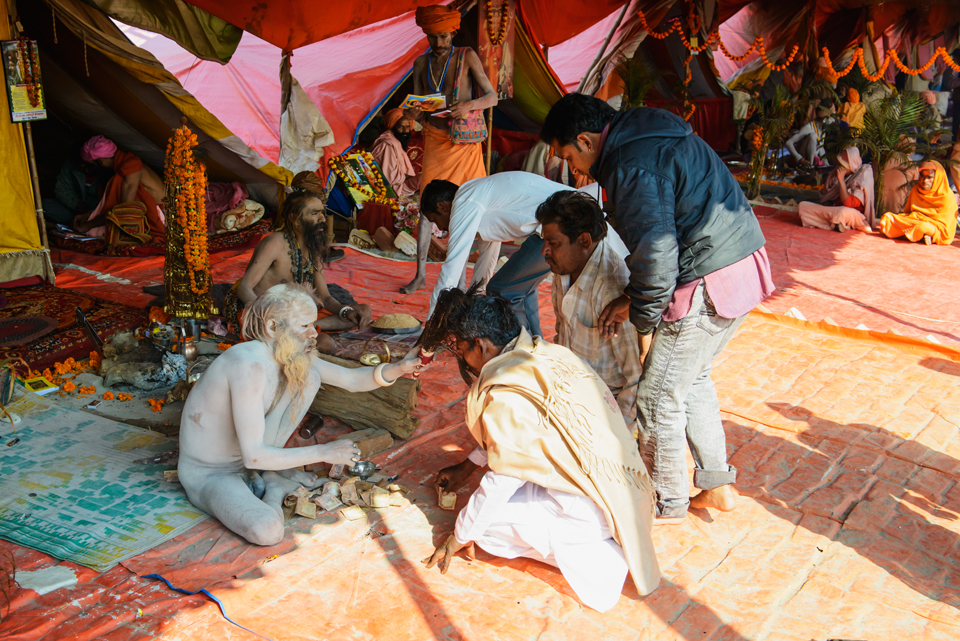
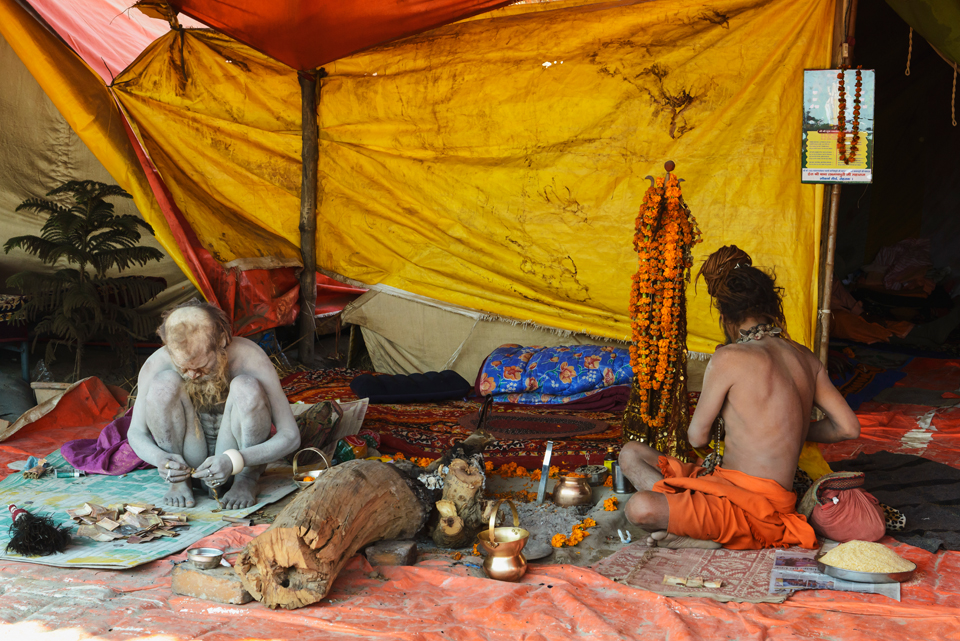
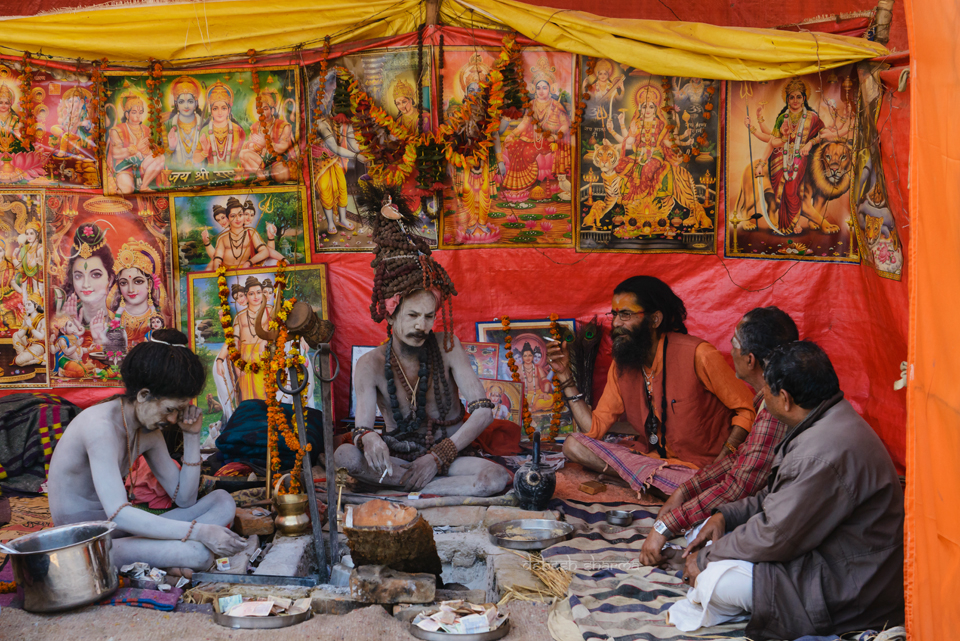
Here saints and sinners, mystics and beggars, all gather on the banks of the holy Ganga in the smorgasbord of by far the largest human congregation on Earth, albeit temporary. Pilgrims travel from far across many miles to bathe in the Ganga; they are dressed in their finest and most colorful – it is a celebration of hope, and festivity for a better tomorrow.
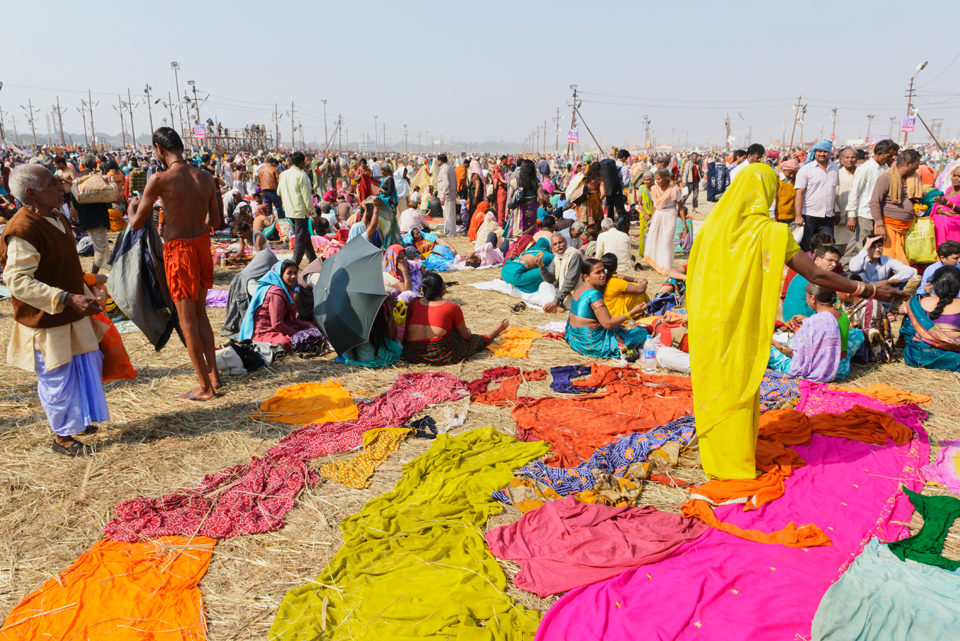

The numbers tell the story – this year there were a total of 100 million people who attended the Kumbh; on the days these photographs were made, I was just one of 30 million people there.
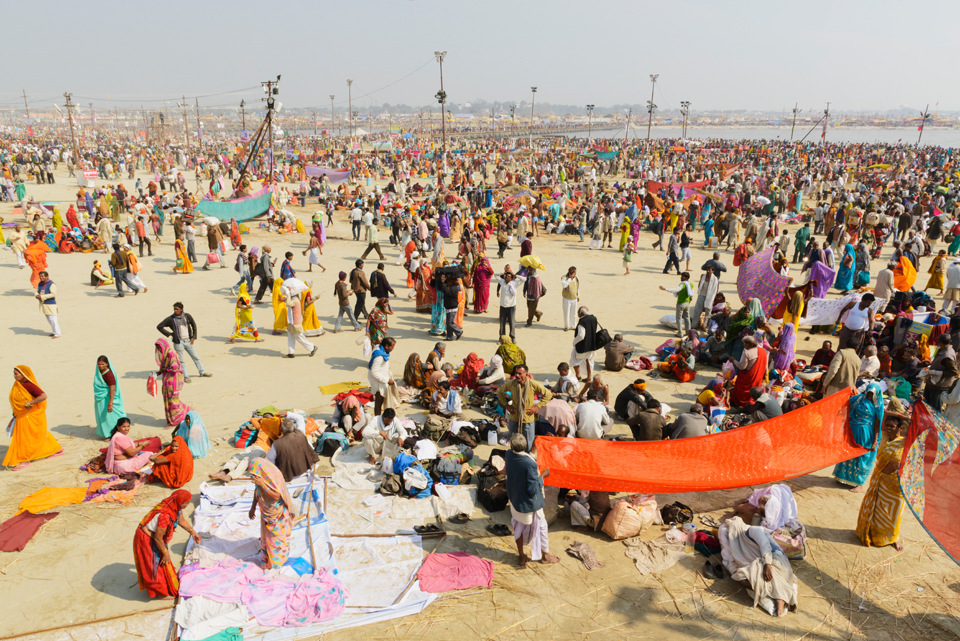
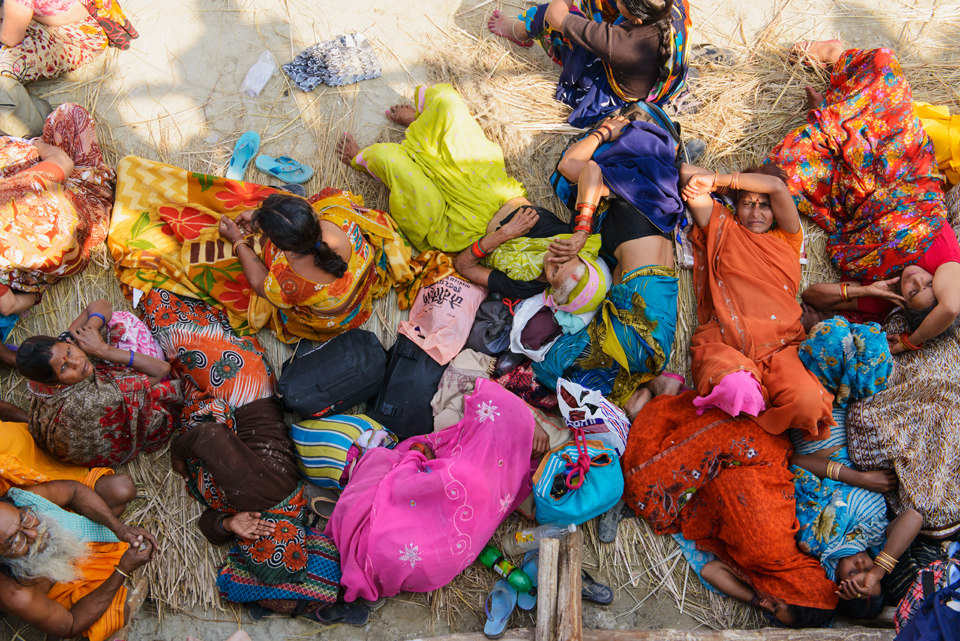
At the Kumbh, there is a veritable sea of swaying bodies and heads, which moves slowly towards the confluence of the three rivers – a deluge of pilgrims. The intonation of invocations, cacophony of flutes, bells, cymbals, horns, and the constant blaring of devotional songs over innumerable loudspeakers are a constant accompaniment to reverence. There are the aged who cannot walk without support, there are mothers being carried literally by their sons, there are sons being carried by their mothers. All in the name of faith. And hope.
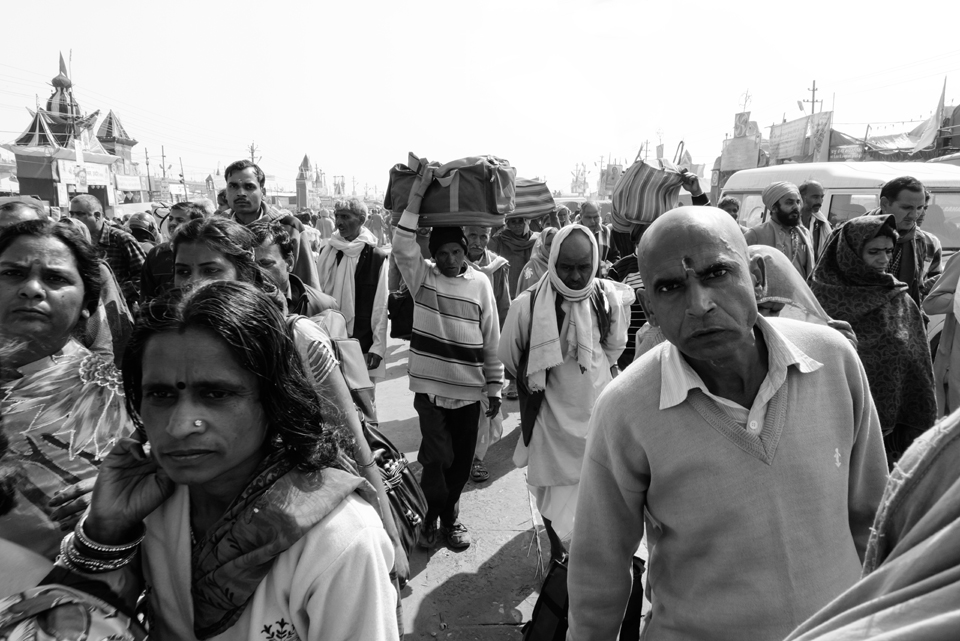
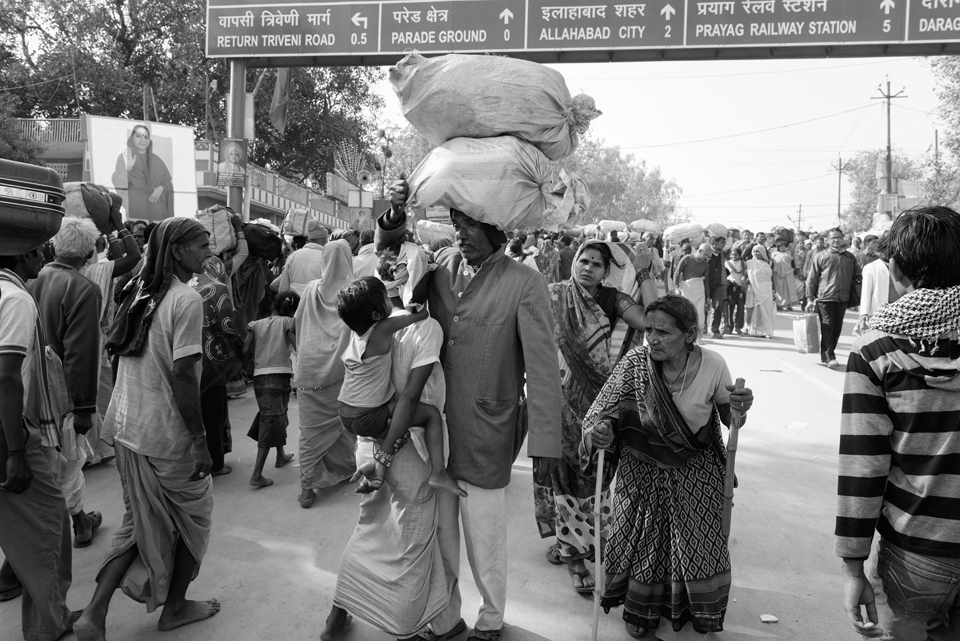

Yes. Faith. And hope. That about sums it all up: for karma, and Kumbh.
And for life.
Leave a Reply